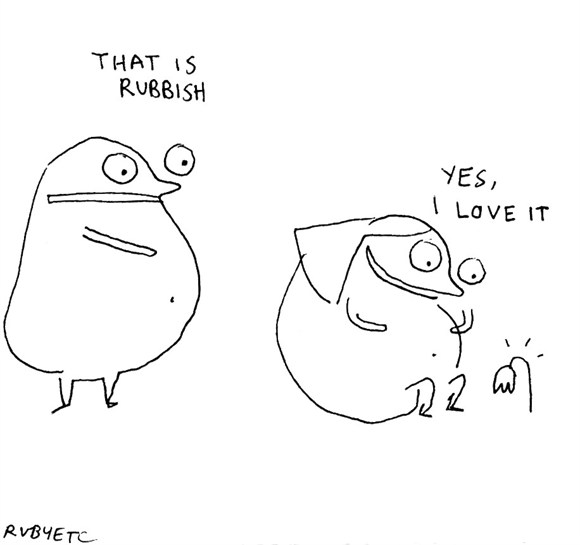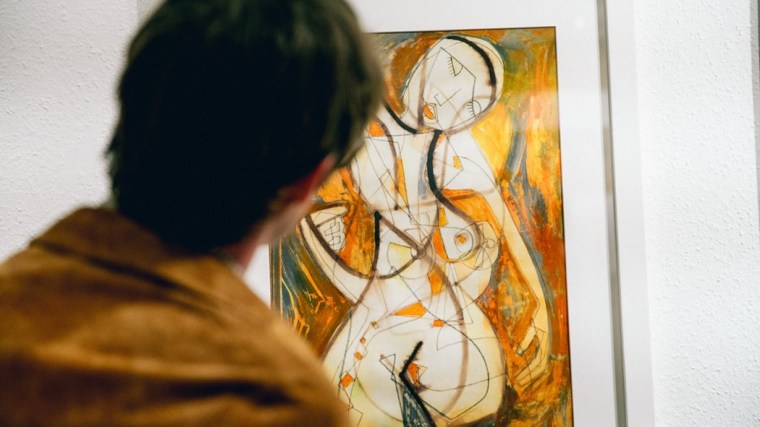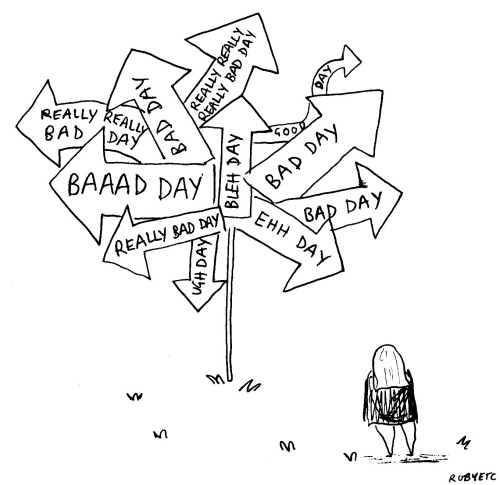In an attempt to encourage talking about Mental Health, creativity is being used as it always has done, as an outlook to express feelings, coming from those who are directly suffering from Mental Health Issues. With so many different techniques available: painting, drawing and writing, we are not short of ways of doing it. Whether being creative intends to raise awareness or is merely just used as an express of relief, it’s important to realise how much creativity is playing a part in making those who may sometimes feel so at lost with themselves, more in control.
I came across Ruby Elliot on World Mental Health Day in an interview with Rethink Mental Health. Elliot is an example where drawing has helped her express how she is feeling and has made for an easier way of demonstrating to people how she was struggling instead of verbally coming out with it. These days we struggle enough to verbally socialise due to technology, but now more than ever we need to be verbal, however, sometimes this isn’t possible due to feeling uncomfortable, so instead we can use alternative ways as Ruby Elliot shows: ” It can be hard enough trying to understand and convince yourself that what you’re going through is real and valid, let alone tell someone else.” Elliot focuses on drawing cartoons as her way of portraying her feelings, although they can be seen as funny, there’s a darker meaning hidden behind the laughter.

You can now get Elliot’s comic book It’s All Absolutely Fine: Life is complicated, so I’ve drawn it instead on Amazon.
In a different outlook, Panteha Abareshi started creating illustrations when her Mental Health took a decline to look at the complexity of issues in society that can trigger depression and anxiety, rather than inherently her own feelings of Mental Health. Yet again it’s used as a form of expression that helps to translate her nightmares of being a young woman into visual realities for those on the outside. Her work may be dark but it doesn’t conceal anything, the illustrations speak for themselves meaning Abareshi doesn’t have to.
Click on the image to enlarge them.
As artist’s Abareshi and Elliot are pushing the boundaries of not talking about mental health by my making it physically impossible not to see it right in front of you. For some of us it’s easy to shrug off words and change topic when you don’t fully understand what is being expressed, but with drawing and painting you can look at it ten times over just to make sure you understood. Those who talk openly about their mental illnesses should never be confined to fearing that people think they are wanting unneeded attention, instead they should be hailed for their bravery in creating pieces that help others who are less likely to express how they are feeling, as well as helping themselves get through their issues.
London has recently opened an Art Gallery of paintings done only by Mental Health patients, although the concept and idea breaks a lot of rules and can be frowned upon by others who don’t understand its objective, it ultimately aims to exclude being ashamed of mental illness. Talking to DAZED, Ben Wakeling an Art-Therapist and one of the creators of the Outsider Gallery comments on the creative process of the pieces that can be seen in the Gallery: “They’re not calculated like other art movements, they didn’t understand what they were doing and you can’t (say), “I really want to put the work into an exhibition” because they’ll just be talking at you about King Charles and being his best friend. They’re in their own story and it’s constant. And some of those outcomes, whether it’s music or art-related, visual marks, are so beautiful and I really wanted to start framing the work, hanging it up and telling my mates. The more I got involved in the arts, the more distant I became from art movements. I didn’t realise at the time but there isn’t a mental health gallery in London or a dedicated space for mental health.” take a look at the whole interview on DAZED to see their exclusive view of mental health therapy.

In addition, a mental health magazine named ANXY, hopes to be released in 2017 with the aim of promoting personal narratives through the use of illustrations and photography. “The biggest takeaway that we want readers to have is this sense of connection,” Rojas said, ANXY’s founder and creator, talking to Huffington Post: “This can be a shared experience, but the main challenge is that people rarely talk about it. The magazine will hopefully give those with mental health issues a greater feeling of community.” The magazine will give a different way of reading about Mental Health in comparison to scientific magazines, who may discuss the subject, but using a creative magazine will hopefully make the subject more readable and visual for the readers, therefore, more understandable.
The importance of all these outlets is that they encourage others to seek the help if they need it, through showing that mental health is everywhere, and it affects everyone in one way or another, be that directly or indirectly. As well, even more importantly they create platforms in which people who don’t quite understand Mental Health can learn and better educate themselves to become more comfortable in talking about it.



